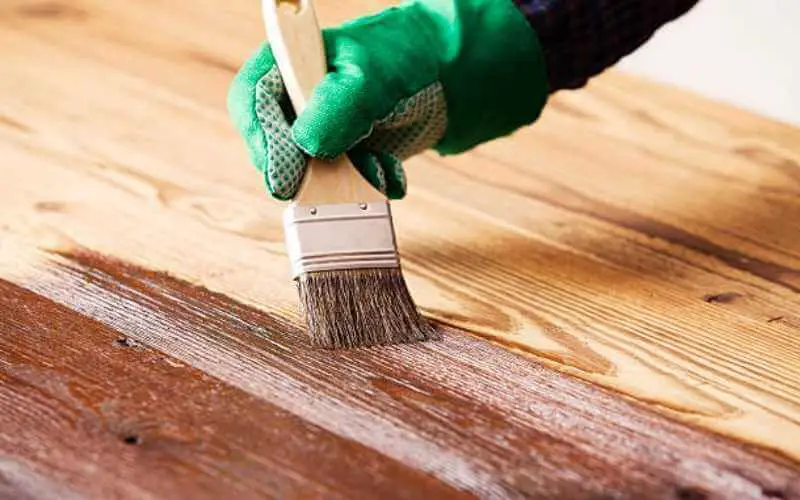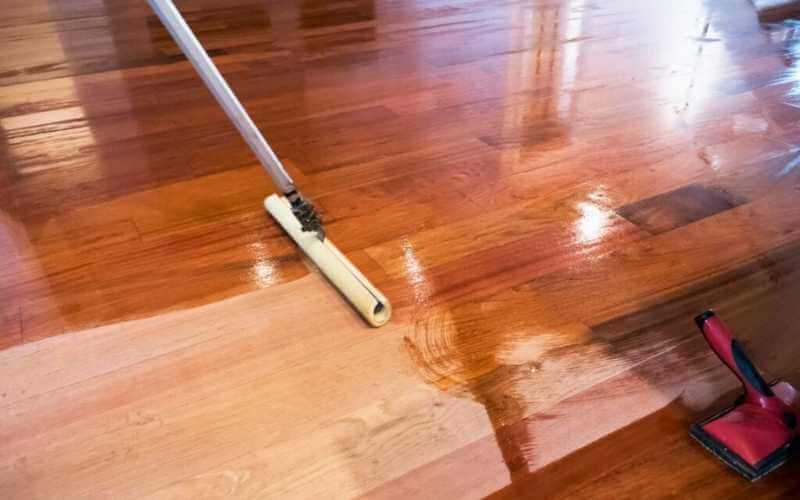At every point in time, some floorboards of your hardwood floor need to be either sanded or replaced. In any of these circumstances, you will need to stain the sanded or replaced floorboard to match the rest of your hardwood floor.
This brings us to the important topic of how to match hardwood floor stain. To match hardwood floor stain, you need to ensure that the replacement board you want to stain is of the same specie with your hardwood floor.
Read on to learn more on how to match hardwood floor stain.
How to Match Hardwood Floor Stain
If you’re replacing a floorboard of your hardwood floor, note that the replacement board should be made of the same material as the remainder of the floor.
If you install a mahogany replacement board on a white oak floor, no matter what finish or stain you apply, it will not match. However, if you use the same sort of wood board as the replacement, you will be able to achieve a very close match that no one else will notice.
If you’re replacing a board, match the grain pattern. The grain pattern on the entire wood floor must be the same orientation. You can still match the finish if the boards are not all oriented the same way, but the floor will not look uniform.
Once these factors above have been determined, you can get to staining the replacement board.
The first step is to determine the stain’s color. Lighter wood floors may simply have a finish applied over the top.
Polyurethane is a popular and long-lasting finish, and oil-based polyurethanes provide a golden tint to any wood to which it is applied, while water-based polyurethanes are transparent.
You can achieve this look by soaking a rag in rubbing alcohol and putting it on the board. If the alcohol-covered board looks almost identical to the completed boards, a coat or two of oil-based polyurethane will do the trick.
If the alcohol-coated board is too dark, a clear water-based polyurethane is the solution. If the colors are drastically different and you need to start over, the alcohol will evaporate, leaving no trace.
Compare many different stains on another piece of the same sort of wood. Consider the color of the existing floor stain. For instance, if the existing color of your hardwood floor is cherry, you will need to purchase at least three brands of cherry stain because the shade will vary somewhat from brand to brand.
Wipe these stains onto a similar piece of wood and compare them to the original floor once they have dried. Understand that the longer a stain is on the wood before being washed away, the deeper it will be absorbed into the wood pores, and the darker the finish color will be.
A stain left on a floorboard for one minute, for example, will not be as dark as a stain left on for three minutes. Time the various stained samples and choose the ones that best match the floor color.
Polyurethane is used to finish the samples. Use high-gloss polyurethane if the original finish is shiny. Use a semi-gloss polyurethane if the gloss is reserved and not as glossy.
Related: How to lighten wood floor without sanding
Tips for Matching Hardwood Floor Stains
While the description above might seem a bit easy, it is always not like that. There are some factors to pay attention to when matching hardwood floor stain
1. Remember that Wood is Unpredictable
Wood is made up of millions of cells that we rely on to absorb pigments and dyes. The absorption rate and capacity of these cells are controlled by an astounding number of factors, which is why staining wood is unpredictable.
As mentioned earlier, it is easier to stain woods of the same species. If you are not so fortunate and the replacement board you bring home is of a different species or, worse, a combination of more than one wood species. Then staining the replacement board to match your hardwood floor stain might be close to impossible.
Even though the two boards are of the same type, we frequently find that the same stain does not have the same effects.
The cells that make up the pores of an oak board, for example, range in color from redwood, which has a natural reddish hue, to white oak, which is actually brown. The same may be said about many varieties of maple, pine, and mahogany, to mention a few.
Read: How often should you burnish a floor
2. Remember, It’s Hard to Match Grain Patterns
Even when working with two identical boards, various factors can complicate the stain matching process. The grain pattern is the most common. The pores on each board arrange themselves in a way that is somewhat different from board to board.
Even the grain pattern within each species of wood can still differ.
How the lumber is cut from the log can also have an impact on the grain pattern. The most well-known example is ‘quarter-sawn oak’, which, contrary to popular belief, is not a new species of oak but rather a different method of splitting the log into boards.
Plain-sawn oak is simply chopped off the log, resulting in boards with a classic, long wavy grain pattern. When the log is sliced into quarters, and then at a different angle, huge flakes of grain are seen in the resulting boards.
3. Levels of humidity
The quantity of moisture in the cell walls of each wood also determines the final color. Exceedingly dry wood will naturally absorb more dyes and pigments than wood with a larger amount of moisture.
4. There are some Rules to Stain Blending
When it comes to stain mixing, keep in mind that you may find that the best color for your project is a blend of two or more colors that your custom mix.
There are some rules to follow when stain mixing. First, never combine oil-based stains with water-based stains; second, measure your materials carefully with plastic measuring spoons or cups; and finally, write down the exact formula so you can reproduce it the next day or year.
5. Controlling Stain Intensity
The length of time you allow the stain to be absorbed by the pores before wiping away the excess liquid can also affect the final color of the board.
When testing your stain, time different samples and compare the color of those that were left on for one minute against those that were left on for three or five minutes.
6. Lighting Conditions
Another thing to think about while matching stains is the light you’re working in. Keep in mind that a hue can have three different color tones when viewed under three different lighting situations, namely natural sunshine, incandescent bulbs, and fluorescent tubes.
The difference may be subtle, but two colors that appear to match under a fluorescent light in your workshop may not match when carried into your dining room.
The general rule is to apply your stain in the same lighting circumstances as the room where the piece will be displayed.
Related: Should hardwood floor match baseboards
Conclusion
So, while matching hardwood stain might seem like a straightforward task, there are various factors to consider. Some of these factors have been extensively discussed in this post on how to match hardwood floor stain.

